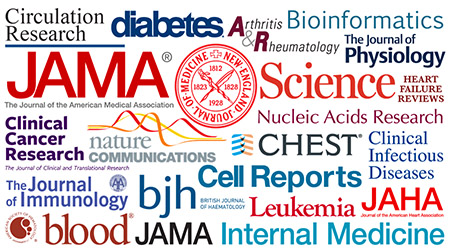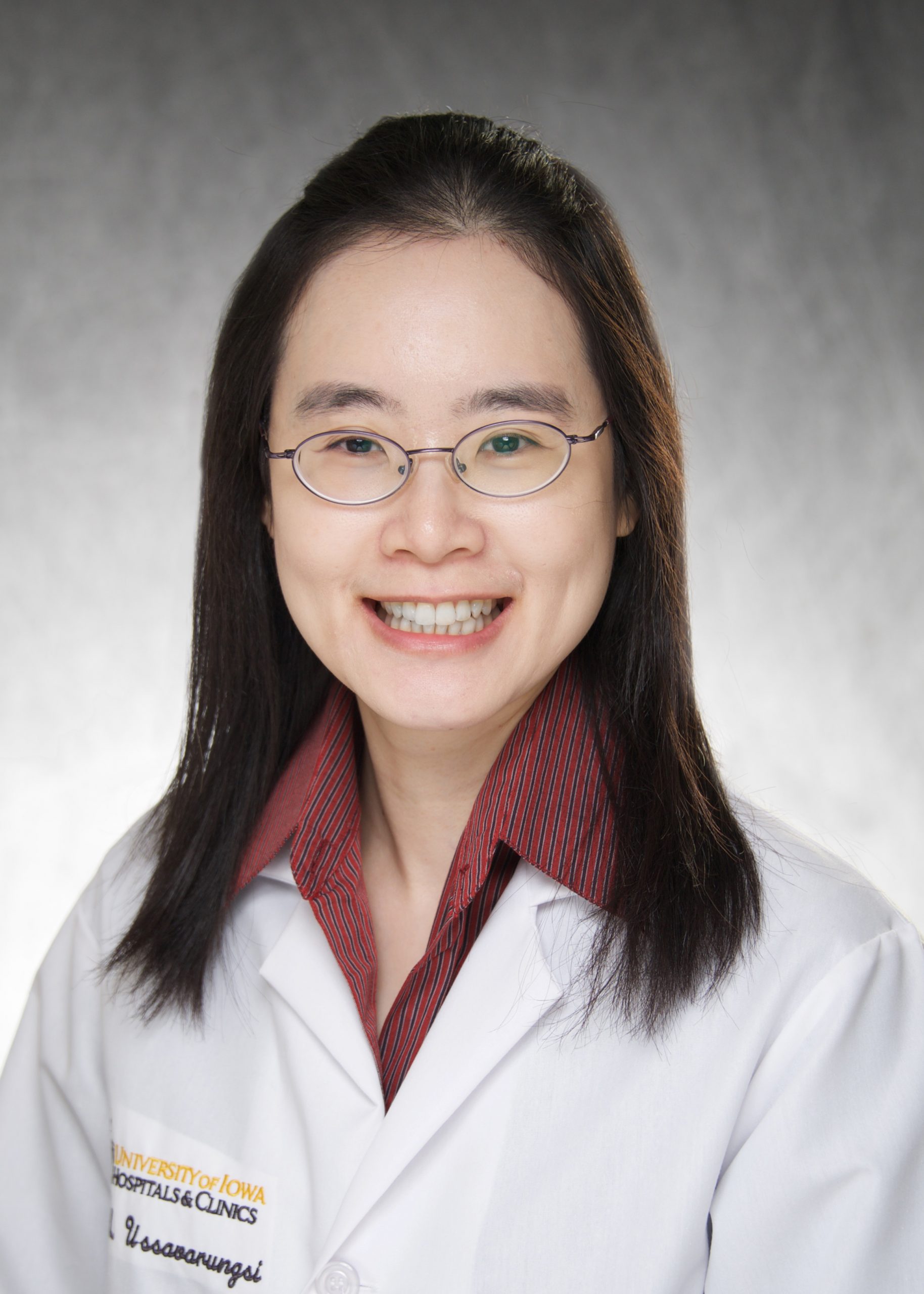I am writing to share my perspectives on scholarship in our department, how we support and enhance it, and how it should be measured. The University of Iowa is internationally recognized for its research output, and the Department of Internal Medicine has been an important contributor to our university’s academic reputation. Our research productivity wins us grants, creates intellectual property, and in so doing contributes to the state’s economy and to the advancement of human health. Research and scholarship within the department span the spectrum from basic and fundamental mechanistic discoveries to health services and population level research. We highlight on a regular basis a sampling of contributions and successes, which is never too difficult to do. But we live in a world that is increasingly being governed by metrics. How should we as a department quantify our research productivity and scholarship? Although it can be argued that we cannot manage what we do not measure, quantifying our research scholarship and its impact is not necessarily straightforward. Should we be tracking the total number of publications, the ratio of publications per faculty, the number of citations of our articles, the names and impact factors of the journals in which we publish, or simply the number of faculty who publish?
 As many of you know, an institutional metric has been proposed that measures scholarship by authorship by faculty, tracking the number of our members who are first or senior authors on manuscripts, or who have been co-authors during a 12-month period. This has generated much discussion within our faculty. Issues raised include: Given the increasing clinical demands of our faculty to increase productivity and the increased time spent on documentation, compliance, and patient communication in the electronic medical record, how will busy clinicians find the time to write scholarly articles and to publish? How does this metric measure excellence in teaching and mentoring, which is another core facet of our academic mission? What counts as a publication? How does this metric impact faculty advancement for the large number of colleagues who are on the clinical track? What are the sources of support for publication charges for faculty who do not have extramural funding?
As many of you know, an institutional metric has been proposed that measures scholarship by authorship by faculty, tracking the number of our members who are first or senior authors on manuscripts, or who have been co-authors during a 12-month period. This has generated much discussion within our faculty. Issues raised include: Given the increasing clinical demands of our faculty to increase productivity and the increased time spent on documentation, compliance, and patient communication in the electronic medical record, how will busy clinicians find the time to write scholarly articles and to publish? How does this metric measure excellence in teaching and mentoring, which is another core facet of our academic mission? What counts as a publication? How does this metric impact faculty advancement for the large number of colleagues who are on the clinical track? What are the sources of support for publication charges for faculty who do not have extramural funding?
We might all agree that communication of our research discoveries, clinical innovations, advancements in education and curriculum design in rigorous, peer-reviewed journals strengthens our reputation as a community of scholars. As such, seeking out opportunities to disseminate the important work that we do adds value to our overall academic mission. The presence of trainees represent an important opportunity for us to leverage their curiosity into opportunities for writing and publishing. For this reason the department has made resources available to support these activities. These include: subsidized editorial and graphics support, enhancing our communication and outreach regarding potential areas for collaboration, and supporting our trainees in identifying opportunities to present their work at regional and national meetings, with the expectation that these presentations will evolve into publications. I know that many of you are doing this already and we would like to hear from you about what has worked well for you and also the challenges that you face in moving from a presentation or an idea to a publication. We also want to hear from you the ways in which the department can further support these aspirations.
 The college has requested that all faculty establish an ORCID and ScopusID, which are two online databases that can be linked and will be used to track faculty publications. In speaking with many of you and in comparing data in our Academic Professional Record (APR) with data in Scopus, we became aware that there is a discrepancy between what Scopus and our APR reveals. A recent search of APR listed more than 1,000 publications from our department in 2018, while Scopus showed just over 650, a fairly significant difference that must be further understood. We know that publications in journals is easier for Scopus to track, but authorship of book chapters and other less traditional outlets are yet to appear in the database. These must manually be entered into Scopus, which represents an additional administrative burden for many of you. The department has started generating reports to reconcile these discrepancies and will work with division administrators to make these updates on the behalf of faculty members.
The college has requested that all faculty establish an ORCID and ScopusID, which are two online databases that can be linked and will be used to track faculty publications. In speaking with many of you and in comparing data in our Academic Professional Record (APR) with data in Scopus, we became aware that there is a discrepancy between what Scopus and our APR reveals. A recent search of APR listed more than 1,000 publications from our department in 2018, while Scopus showed just over 650, a fairly significant difference that must be further understood. We know that publications in journals is easier for Scopus to track, but authorship of book chapters and other less traditional outlets are yet to appear in the database. These must manually be entered into Scopus, which represents an additional administrative burden for many of you. The department has started generating reports to reconcile these discrepancies and will work with division administrators to make these updates on the behalf of faculty members.
So, we will fix the numbers issue. However, beyond the question of how the totals are tracked, there is a larger issue that should be raised. Science takes time, and publishing top quality papers also takes time. Our two most recent Articles of the Week, remarkable publications from senior authors Dr. Sanjana Dayal and Dr. Isabella Grumbach in Blood Advances and Science Signaling, respectively, represent a significant investment of time. In fact, Dr. Dayal reports that her publication represents two and a half years spent on the studies and preparing the manuscript, including 17 figures to convince reviewers of their paradigm-challenging findings, and another seven months to get through an unusual four rounds of reviews. That is more than three years from idea to print. Dr. Grumbach reports that she and her team spent four years on the science and another nine months to get the manuscript published.
Each of us must carefully strike a balance between the investment in time that larger studies require and the work of publishing smaller reports. I believe that each of you will be guided by what will contribute most importantly to your field. We should also ensure that we submit our work to outlets with the highest standards of peer review and feedback when they are ready to be disseminated to the world. Moreover and particularly with our trainees, we have worked to help them identify and eschew many of the predatory journals that proliferate seemingly on a daily basis. We are particularly sensitive to the challenges of our colleagues who are busy clinically. We would appreciate hearing your perspectives on ways in which the department can support your scholarship as clinicians, or work with you to identify opportunities to form productive collaborations with trainees or colleagues who may have ideas that could leverage your clinical activities into scholarly work.
I am convinced that your decision to be a part of this department was driven in part by the environment of scholarship and discovery that has characterized our department for many years. We continue to excel in many fronts, including our collective published output as a department. We celebrate together each time one of us is recognized for our scholarly achievements. I know that you do not need too much encouragement to continue to push our academic mission forward, a goal to which I know that you are all committed.

